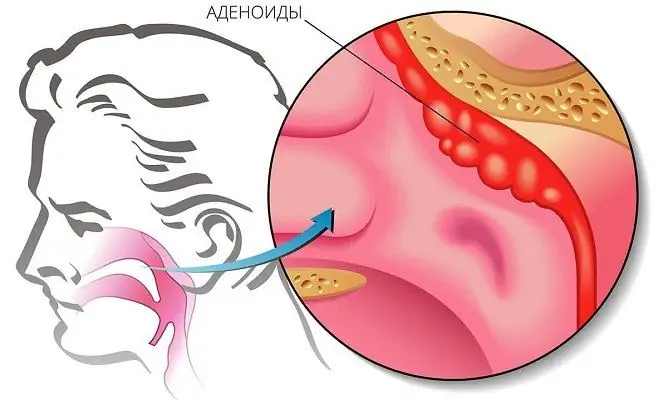- Author Rachel Wainwright [email protected].
- Public 2023-12-15 07:39.
- Last modified 2025-11-02 20:14.
Dermatitis herpetiformis

Dermatitis herpetiformis (Dühring's dermatitis, pemphigus priruginosis, polymorphic bullous dermatitis) is an inflammatory disease of the mucous membrane of the oral cavity and skin. This skin lesion refers to chronic dermatosis of unclear etiology. Dühring's dermatitis herpetiformis most often develops in patients aged 20-45 years, and women are sick twice less often than men.
This skin disease was first described by the American dermatologist L. Dühring. After him, many scientists studied this disease, but the cause of its occurrence is still unknown. In various studies of scientists, neither a viral nor a specific bacterial factor in dermatitis herpetiformis has been identified. Some scientists have associated the development of the disease with endocrine disorders and hereditary disorders. Other researchers spoke about the allergic nature of dermatitis herpetiformis, since this disease proceeds against the background of impaired absorption in the intestine and increased sensitivity of patients to drugs containing iodine.
Symptoms and course of Duhring's dermatitis herpetiformis
For polymorphic bullous dermatitis, a paroxysmal appearance on the skin and mucous membranes of the human body of a polymorphic itchy rash in the form of papules, spots, vesicles, urticarial elements, blisters is characteristic. The blisters of the rash are similar in appearance to the blisters that form from a nettle burn. Bubbles in shape can be either flaccid or dense. The contents of the vesicles may be cloudy, clear, or hemorrhagic. When the bubbles open, they dry up and form honey-yellow or bloody tubercles, under which epithelialization occurs later. When they heal, pigmentation remains on the skin. Papules are usually represented by pimple-shaped bubbles. All elements of the rash are grouped into half rings, rings and garlands.
All forms of Duhring's dermatitis herpetiformis are characterized by burning and itching at the sites of skin lesions. The spots resemble semicircles, rings and circles with uneven edges. With this disease, the rash most often appears on the smooth surface of the shoulders, arms, thighs and buttocks, in the sacral and scapular regions, on the scalp, on the neck and face (at the border of hair growth). Digestive disorders due to hypersensitivity to gluten (a vegetable protein in cereals) occur in nine out of ten patients. Itching, burning, and tingling on seemingly unchanged skin usually appears 10 to 12 hours before signs of a rash appear.
In childhood, a rash with dermatitis herpetiformis is usually represented by some one element, most often vesicles. In some patients, along with skin rashes, a rash and erosion in the form of bubbles on the oral mucosa appear.
In the absence of proper treatment, the course of dermatitis herpetiformis can last for many years. The disease periodically worsens, but it may disappear forever. Cases have been recorded when this disease went away on its own, many years after its appearance.
With a severe course of dermatitis herpetiformis, the patient's health can be undermined by complications arising from prolonged digestive disorders.
Diagnosis and treatment of dermatitis herpetiformis

At home, you can diagnose this disease using an iodine test. To prepare a 2% potassium iodide solution, add half a teaspoon of potassium iodide to a glass of water. Then you need to drink three tablespoons of the prepared solution at once.
You can also make an ointment with one part petroleum jelly and one part potassium iodide. The resulting ointment should be briefly applied in the form of a compress to the skin in the area of one of the foci. The appearance of new elements of the rash will be the reaction of the human body to iodine.
A dermatologist can determine the true cause of skin rashes. A dermatologist will make a diagnosis based on the results of histological examination of the tissue.
The main remedy for dermatitis herpetiformis is drugs containing sulfur (sulfonamides and sulfones). As drugs for external use, drugs with glucocorticoids and tar in the composition are usually prescribed.
For digestive problems, the doctor usually recommends a gluten-free diet with the exception of oats, rye, wheat, barley, millet and other cereals, as well as foods that contain iodine. When rice, corn, potatoes and millet are added to the diet within a month, the disturbed digestive function is usually restored.
At home, you can additionally use various ways to increase the body's defenses. In general strengthening therapy, you can include regular sports, taking vitamin complexes and various energy supplements. To relieve inflammation in Duhring's dermatitis herpetiformis, lesions can be treated with powder of any sulfonamide drug for 10-14 days.
YouTube video related to the article:
The information is generalized and provided for informational purposes only. At the first sign of illness, see your doctor. Self-medication is hazardous to health!






